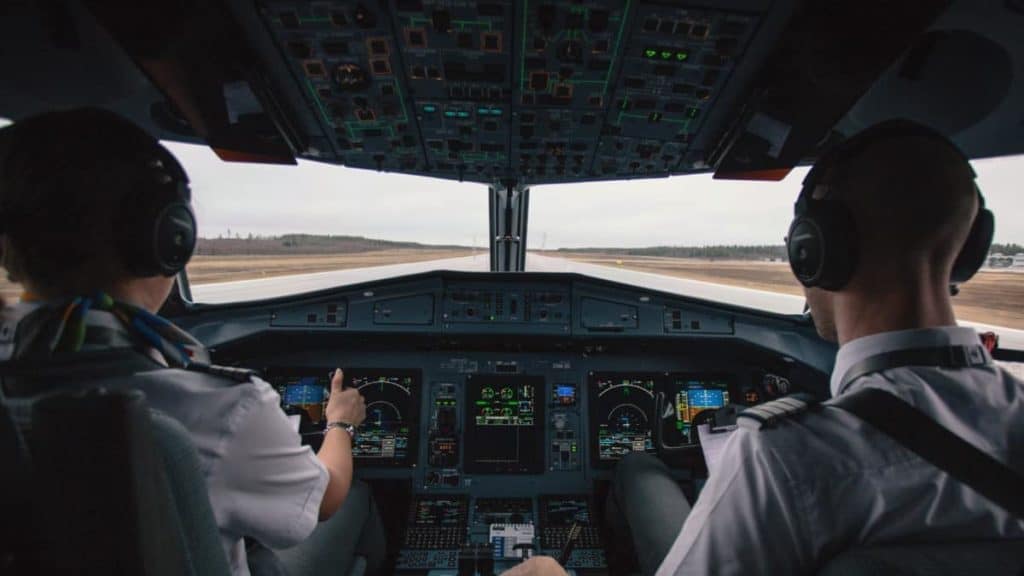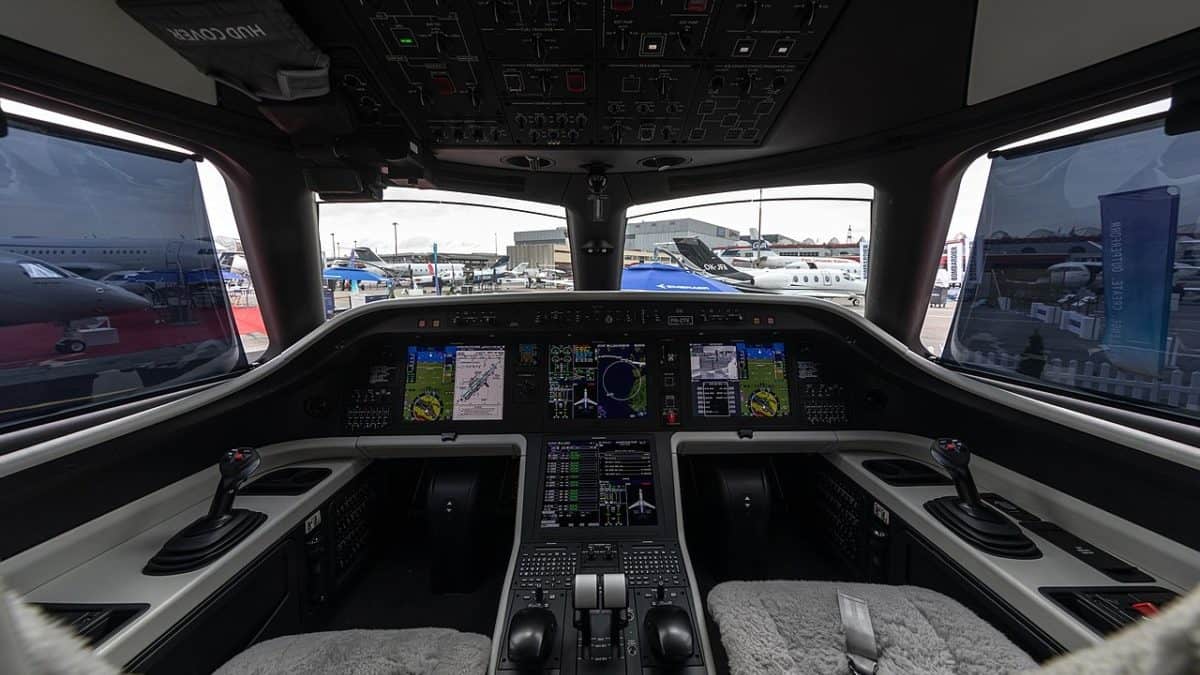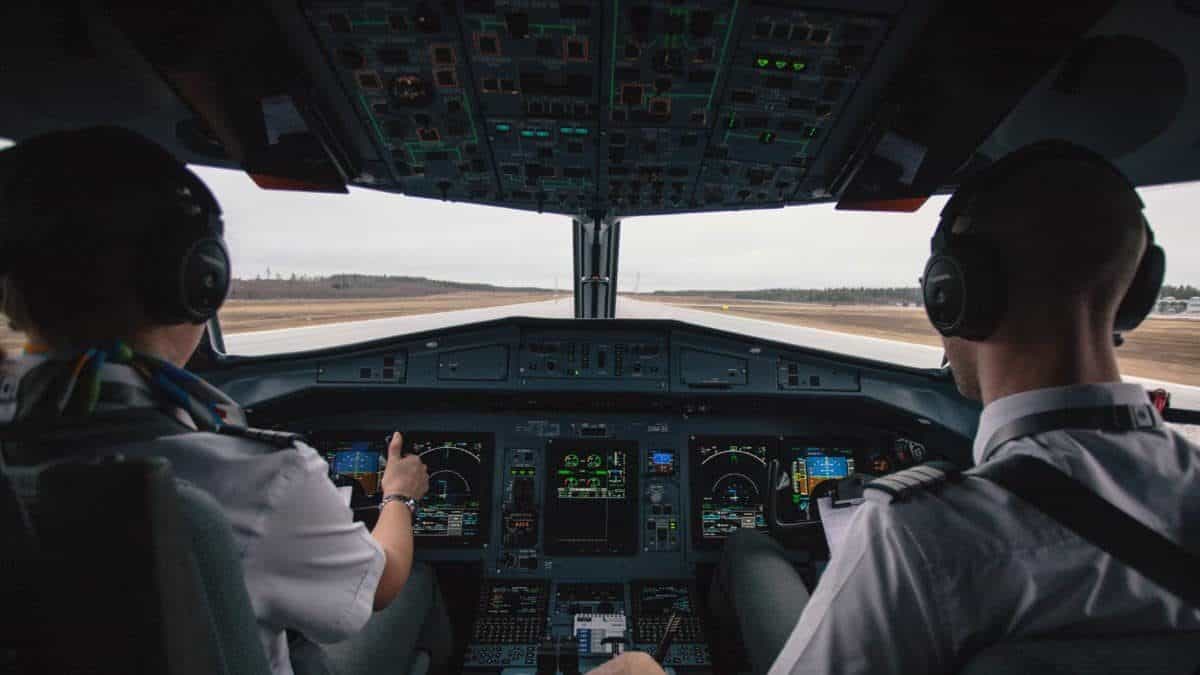
When sitting on an airplane during a long boring flight there comes that time when we have to go and use the bathroom. The question then arises of the pilots. Are they able to leave the cockpit to use the bathroom?
Federal Aviation Regulations are mandated by the FAA (Federal Aviation Administration) and dictate when, and for what reasons a pilot is allowed to leave the cockpit. These guidelines are in place to protect the traveling public and include the stipulation that aircraft weighing more than 12,500 pounds, i.e. large transport aircraft, must be operated with two pilots in the cockpit.
Pilots are allowed to leave the cockpit while in flight for rest breaks, bathroom breaks and to deal with any passenger or crew situations. Airlines dictate their own rules but at least one pilot must remain at the flight controls, seat belted and if above 25,000 feet, may wear an oxygen mask.
Aviation regulations have evolved over the years due to safety-related crashes. Gone are the days when pilots invited travelers, often children, into the cockpit to experience the thrill of meeting the pilots in their ‘office’ during a flight.
This writer, in the late 1990s, was invited into the cockpit of an Aer Lingus A330 for the final 30 minutes of a flight from Dublin to Chicago. That invitation is no longer a possibility given today’s aviation security measures, which is a shame because every person remembers their first visit to the cockpit!
Why Do Pilots Leave the Cockpit?
By far the most common reason for a pilot to leave the cockpit is to use the bathroom. Airline passenger aircraft produced today, jets and large turboprops, feature a lavatory just outside of the cockpit that is for the use of passengers seated in the forward portion of the cabin, as well as the cockpit crew if needed.
There is an indicator light or message in the cockpit to advise the pilots when the forward lavatory is occupied. This way they don’t vacate the cabin until the lavatory is available, in order to enter immediately upon leaving the cockpit.
Often, the forward flight attendants are advised in advance that one of the pilots has a need to exit the cockpit, allowing them time to ensure that no passengers are close to the front of the cabin.
FAA regulation subparagraph 91.105, states: “During takeoff and landing, and while enroute, each required flight crewmember shall be at the crewmember station unless the absence is necessary to perform duties in connection with the operation of the aircraft, or in connection with a physiological need.“
The 2001 terrorist attacks on 9/11 led to tightened security in virtually all areas of airline safety, including the installation of secure, bullet-proof cockpit doors.
If you wish to read more on the security of cockpit doors please check out this article:
Are Aircraft Cockpit Doors Bulletproof?
An even bigger change, though it was temporary, was implemented by airlines worldwide after the 2015 suicide crash of a Germanwings A320 into the French Alps. In this instance, after the captain exited the cockpit to use the facilities, the first officer turned on the cockpit door ‘Deny‘ lock so that no one could enter from the outside.
Not even the returning pilot could get in using his cockpit door key or keypad code! A total of 144 passengers and six crew members perished in the crash, including the first officer who had remained in the cockpit.
By far the most common reasons why a pilot would leave the cockpit other than to use the bathroom are:
- To assist with unruly passengers, typically at the request of the cabin crew
- To assist with ill passengers, also at the request of the cabin crew
- In response to a passenger or cabin crew member advising that something may be amiss either inside the cabin or sometimes in response to any inquiry from a passenger who may see something alarming to them involving the wing or wing-mounted engine.
This may be something as simple as unexpected condensation in the cabin, to get a first-hand look at potential ice buildup on a wing, or to make visual confirmation of a flap or slat position if the indicator in the cockpit may not be working properly. This is a highly unusual situation, but I have been on flights where this was exactly what happened.
- To stretch their legs and grab a beverage, which is more likely during a lengthy flight. Typically the pilots will ask a flight attendant to bring them a beverage or snack, but sometimes it just feels good to get up and move around.
- For an authorized rest period. On lengthy international long-haul routes, a change of cockpit crew en route is sometimes required. For this reason, these flight segments carry an additional pilot(s), usually seated in First or Business Class, who begin the flight in ‘Rest Mode’, becoming the active cockpit crew at a pre-planned location along the route of flight.
- To sleep. Also on long-haul flights, there can be 3 or 4 crew members that rotate flying duties while the off-duty flight crew member sleeps in crew bunks hidden above or below the first-class cabin.
Some airlines, while no longer requiring two crew members to be in the cockpit at all times, have instructed the cabin crew to place a service cart with locked wheels, along with a flight attendant in the aisle leading from the front row of seats to the cockpit door.
This is seen as a deterrent to anyone attempting to interfere with the operation of the aircraft while one of the pilots is in the lavatory or forward galley. They may also place the cart in the same position if one of the pilots has a need to walk further back in the cabin.

Join My Newsletter & Get Great Tips, Information and Experiences To Help You Become a Superb Pilot!
Can Pilots Leave the Cockpit of Business Jets and General Aviation Aircraft?
Large business jets are designed to accommodate two pilots, so the same general rules apply that at least one pilot will be on the flight deck at all times, seated and ready to fly the aircraft manually at a moment’s notice.

While it is possible to engage the autopilot and have both pilots depart the cabin at the same time, this is a situation that is not permitted either by FARs if the aircraft is heavy enough (more than 12,500 pounds/air transport category), or by company policy by the aircraft’s owner/operator.
While there are small business jets nowadays that just require a single pilot, they are not large enough for the pilot to stand and move about. The same is true for general aviation aircraft, where most can be flown from the front left or right seat. Pilots of these aircraft remain in their seats from start to finish of the flight.
Learn More…
Try These Articles:
* Can a Plane Land Itself?
* How Do Pilots Avoid Jet Lag?


